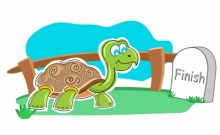Halloween, it’s that time of year again. You cannot avoid it even if you wanted to. The shops are bursting at the seams with ghastly costumes, scary masks, tombstones and fake blood. Wicked party treats, ghoulish toys and blood curdling decorations are in abundance. Furthermore, pumkins are everywhere and even the cosmetic counters are cashing in on red lipstick and black eyeliner!
In fact when applied, all these can look pretty scary!
Not to mention how scary it is now manufacturers are creating costumes based on actual serial killers such as Jack the Ripper. Even more scary (and sicker) are the costumes of Oscar Pistorius (paralympic killer) and Anne Frank (holocaust victim). Amazon have now thankfully removed these from sale following a recent public outcry.
Halloween is now a far cry from the days of witches, bobbing apples and flying broomsticks. Each year costumes and props get scarier and scarier as manufacturers and retailers make a tidy profit. The halloween industry has grown dramaticaly in recent years. Now the second highest spending event in the UK – placing it behind Christmas.
But you know for me the scariest thing about halloween is not the ghostly dress of ghouls and goblins. It’s the impact it has on our children. Do you know the latest research suggests halloween is psychologically scarring our children? Recent studies of 6-7 year olds conclude that most parents did not realise how terrifying halloween can be.
Halloween… All done in the name of fun!
Generally speaking child psychologists warn parents that the fright of some aspects of halloween can be too much for the very young. They advise adults to keep a close eye on children and remind them of what is real and what is not. But that’s just it! Our subconcious mind does not know the difference between reality and fantasy! Children as young as 6 and 7, aren’t able differentiate between real death and the store-bought ghostly costumes and fake tombstones on the grass.
Psychologist Cindy Dell Clark has this to say in the anthropological journal Ethos.
“Intriguingly, Halloween is a holiday when adults assist children in behaviors taboo and out of bounds. It is striking that on Halloween, death-related themes are intended as entertainment for the very children whom adults routinely protect.”
The parental dilemna
For most young children, halloween is often their first introduction to death. Why is it that parents feel it’s okay to expose children to not just death but gruesome death. Yet do not include them in family funerals or even let them witness serious illness. Parents want to protect their children from reality yet at the same time they unwittingly create fear.
Recent research by parenting site ChannelMum.com revealed that two thirds of parents now claim some costumes are too frightening for young children. Furthermore one in five parents fear halloween is becoming more sinister every year. Additionally, two in five parents (41%) claim costumes are selected to terrify as they no longer have a traditional halloween theme.
Blame it on the sugar…
There is no doubt that halloween effects children’s behaviour. Many teachers and parents too, have noticed a significant difference in children’s behavior on those days immediately following halloween. Sugar is deemed to be the culprit for this change. The increase in sugary sweets, cakes and fizzy drinks over the holiday are being blamed for the increased hyperactivity of young children.
However, much research suggests otherwise. Interestingly, the conclusions are that sugar is not responsible for hyperactive behaviour in children. Furthermore some research shows the opposite in that sugar has a calming effect.
Halloween – an implicit message of fear?












